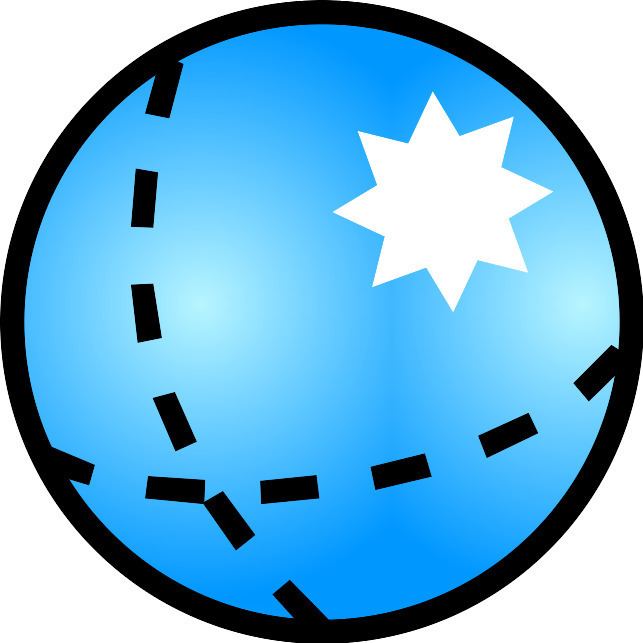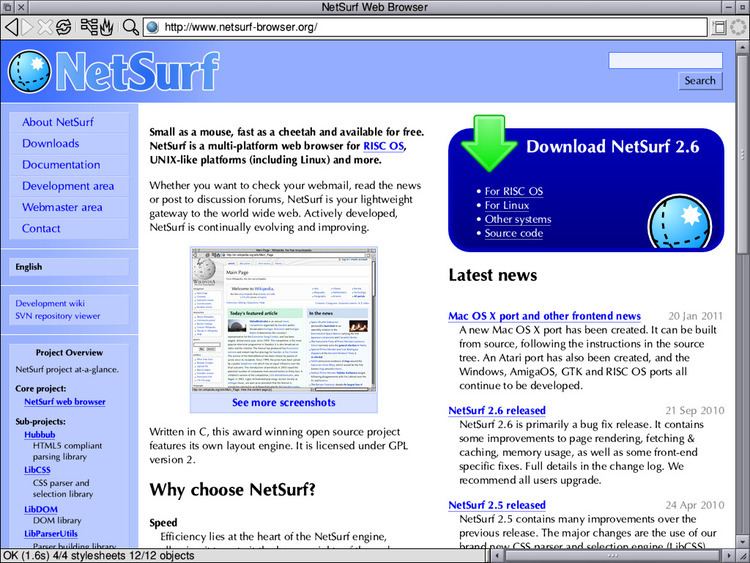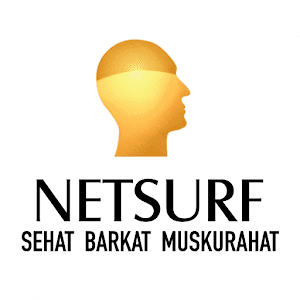Developers The NetSurf Developers Downloadable Yes | Website netsurf-browser.org Stable release 3.5 Development status Active | |
 | ||
Initial release May 19, 2007; 9 years ago (2007-05-19) Preview release Public Autobuilder (n/a) [±] Repository git.netsurf-browser.org/netsurf.git Operating system License GNU General Public License v2 | ||
Lightweight web browsers part 2 netsurf and qupzilla
NetSurf is an open source web browser which uses its own layout engine. Its design goal is to be lightweight and portable. NetSurf provides features including tabbed browsing, bookmarks and page thumbnailing.
Contents
- Lightweight web browsers part 2 netsurf and qupzilla
- Netsurf 3 web browser on amigaos 4 1
- Features
- History
- Ports
- References

The NetSurf project was started in April 2002 in response to a discussion of the deficiencies of the RISC OS platform's existing web browsers. Shortly after the project's inception, development versions for RISC OS users were made available for download by the project's automated build system. NetSurf was voted "Best non-commercial software" four times in Drobe Launchpad's annual RISC OS awards between 2004 and 2008.

NetSurf supports both mainstream systems (e.g. macOS and Unix-like) and older or uncommon platforms (e.g. AmigaOS, Haiku, Atari TOS and RISC OS).
The browser was ranked in 2011 as number 8 in an article highlighting 10 browsers for Linux published in TechRepublic and ZDNet. It was referred to in 2010 as a superior CLI browser to w3m.
Netsurf 3 web browser on amigaos 4 1
Features
NetSurf's multi-platform core is written in ANSI C, and implements most of the HTML 4 and CSS 2.1 specifications using its own bespoke layout engine. As of version 2.0, NetSurf uses Hubbub, an HTML parser that follows the HTML5 specification. As well as rendering GIF, JPEG, PNG and BMP images, the browser also supports formats native to RISC OS, including Sprite, Draw and ArtWorks files.
It was suggested by developer John-Mark Bell in 2007 that support for JavaScript could be added. This feature did not make it into NetSurf v2 back in 2008, nor into NetSurf v3 of 2013, but as of December 2012 there are some NetSurf preview-builds available which contain early-stage Javascript support.[1] On April 20, 2013, NetSurf 3.0 was released.
Ports of the software for Windows and other OS platforms are currently being developed as of 2013; no target-date for completion of this work has been set.
History
NetSurf began in April 2002 as a web browser for the RISC OS platform. Work on a GTK port began in June 2004 to aid development and debugging. It has since gained many of the user interface features present in the RISC OS version. The browser is packaged with several distributions including Ubuntu, NetBSD, and OpenBSD.
After five years of development, the first stable version of the browser was released on 19 May 2007 to coincide with the Wakefield RISC OS show. Version 1.0 was made available for download from the project's web site and the software was sold on CD at the show. After the release of NetSurf 1.0 there were two point-releases, which largely comprised bug fixes. NetSurf 1.1 was released in August 2007 and in March 2008 the NetSurf 1.2 release was made available.
NetSurf participated in Google Summer of Code in 2008 as a mentoring organisation, running four projects. These included improving the GTK front end, adding paginated PDF export support and developing the project's HTML 5 compliant parsing library, Hubbub. All NetSurf development builds since 11 August 2008 have used Hubbub to parse HTML and it is available for use in other projects under the MIT license.
NetSurf was again accepted as a mentoring organisation into Google Summer of Code 2009. The projects they ran included development of LibDOM, the project's Document Object Model, and improvement of NetSurf's user interface. The interface work included moving previously RISC OS-only functionality to the multi-platform core, including bookmarks, global history, cookie management and page search features. A port to the Windows operating system was also started. In 2010 the NetSurf project did not apply to participate in Google Summer of Code due to the developers having other commitments.
Ports
A native BeOS/Haiku port has been developed. Since the GTK version was built for AmigaOS, using Cygnix which provides an X11 environment, a native AmigaOS port has also been developed. In January 2009, NetSurf was made available on MorphOS, an operating system that is API-compatible with AmigaOS. Work has started on a Windows port, but as of September 2009 no official releases have been made.
A framebuffer port was created in September 2008. Unlike the other ports, it does not use any GUI toolkit, but instead renders its own mouse pointer, scrollbars and other widgets. The framebuffer front end has been used to create a web kiosk on embedded systems.
In January 2010, the NetSurf Developers announced the release of what they expected at the time to be the last release for RISC OS. Lead developer John-Mark Bell said at the time "Realistically, the people qualified to maintain the RISC OS port are up to their necks in other stuff." Subsequently, Steve Fryatt volunteered himself as maintainer.
January 2011 saw the announcement of a Mac OS X port. A port to Atari 16-bit and 32-bit computers was also started in January 2011.
